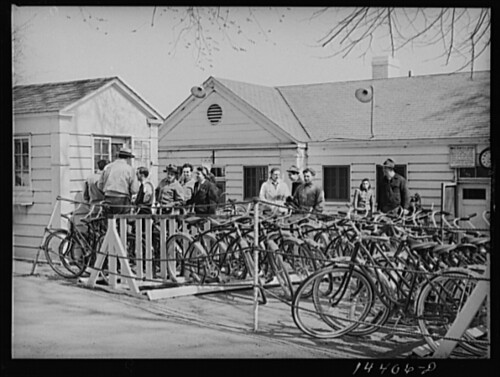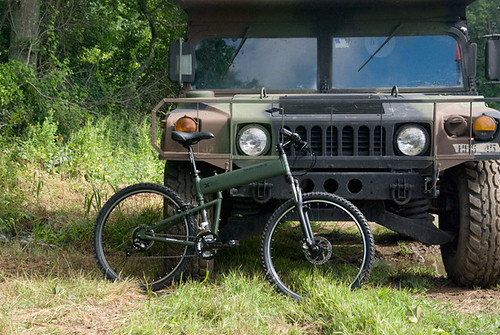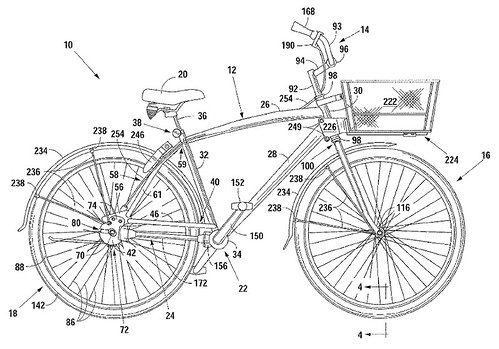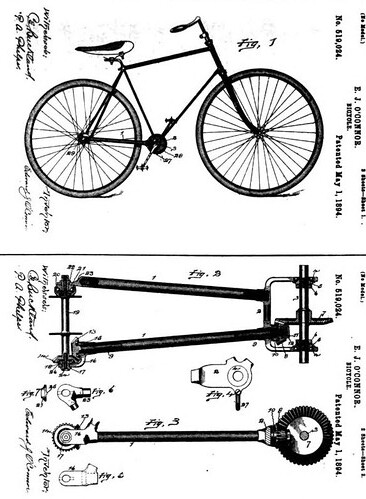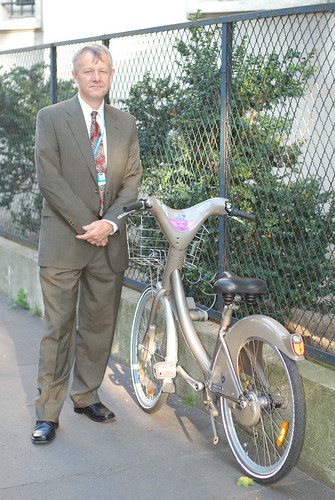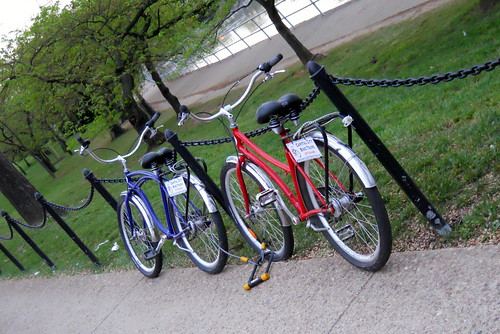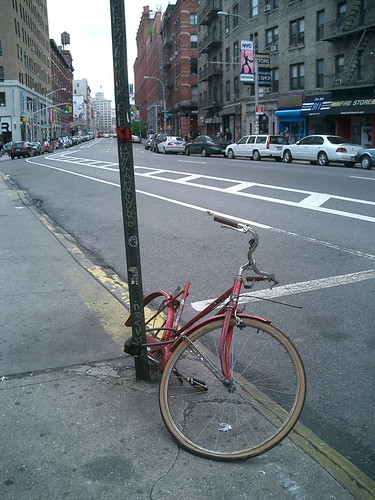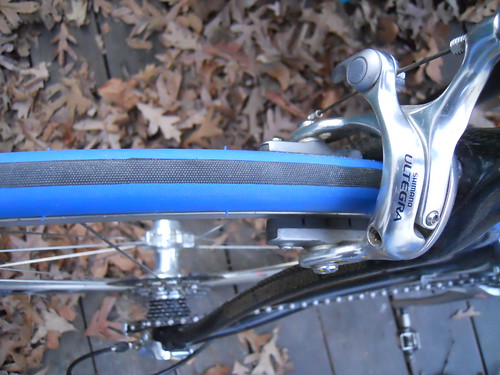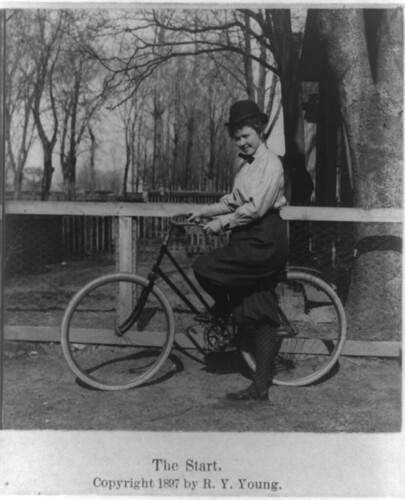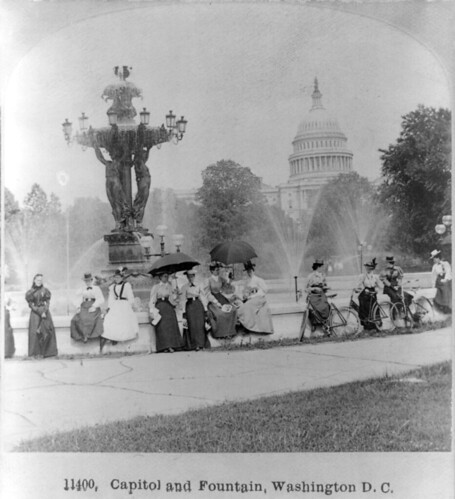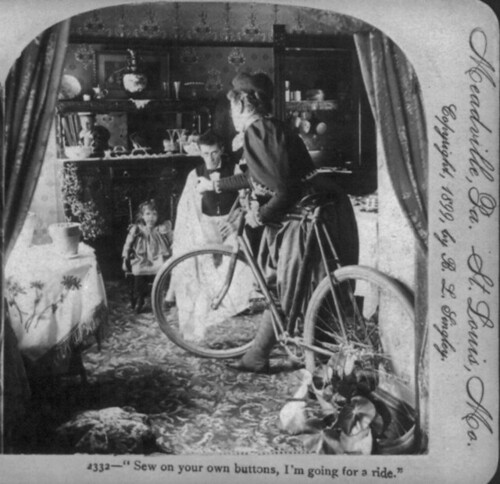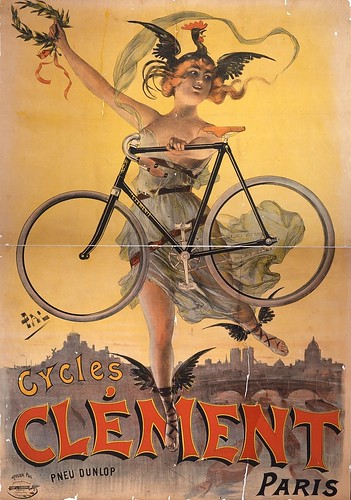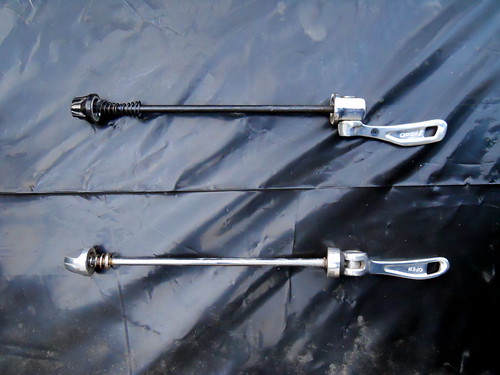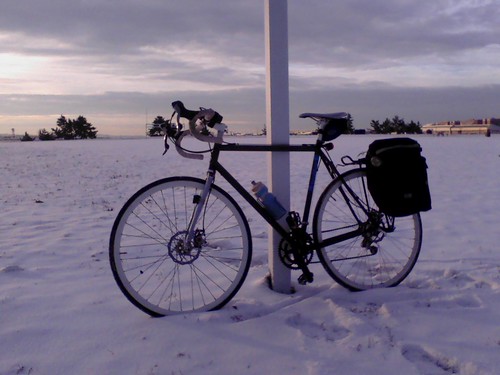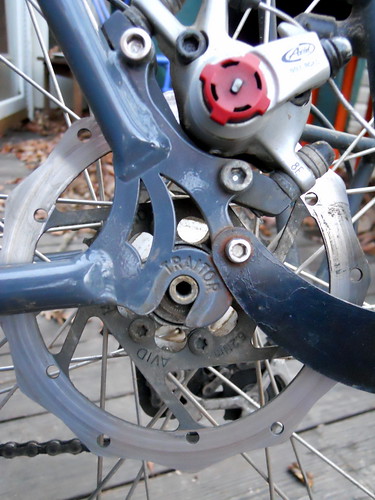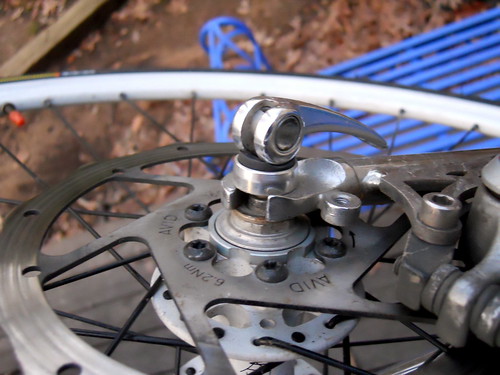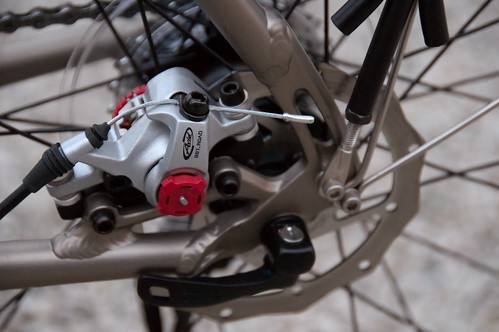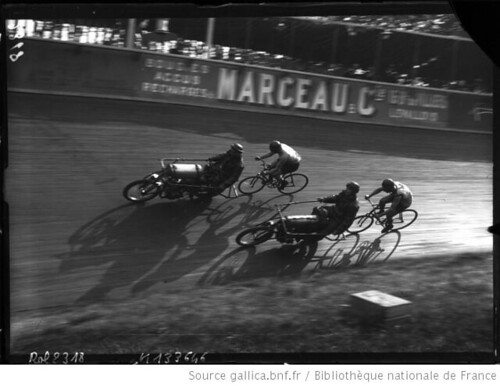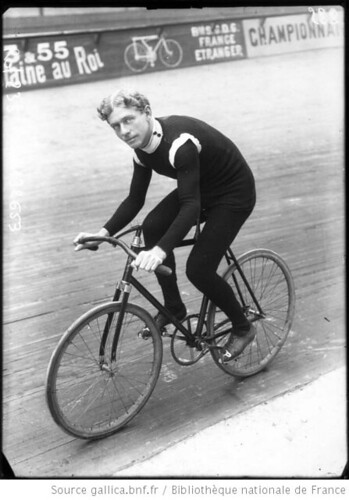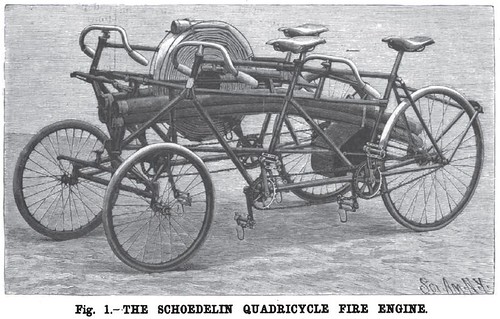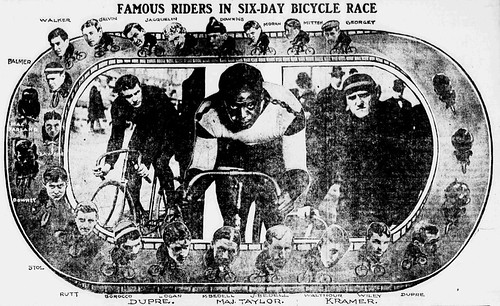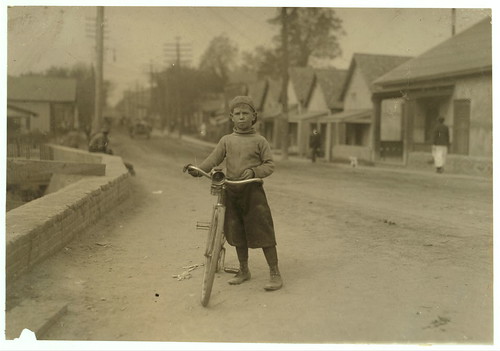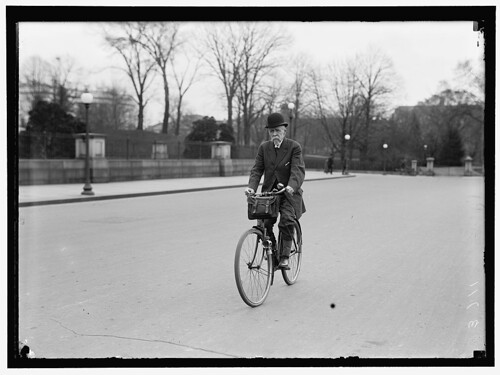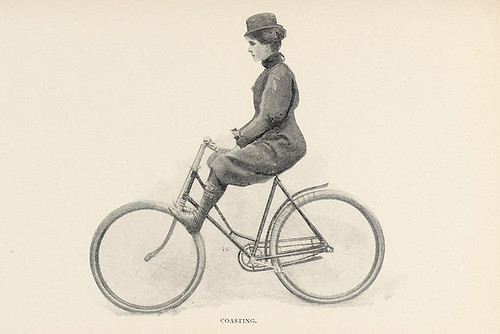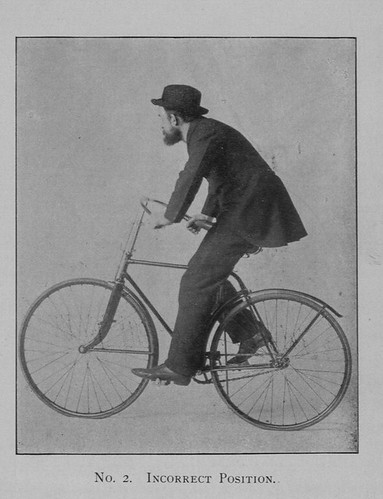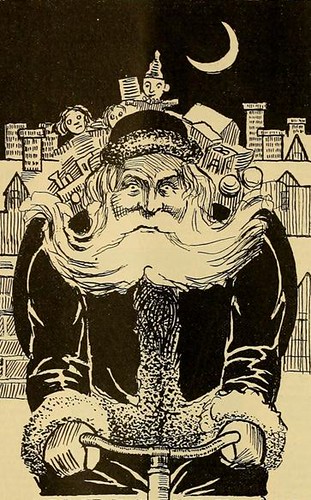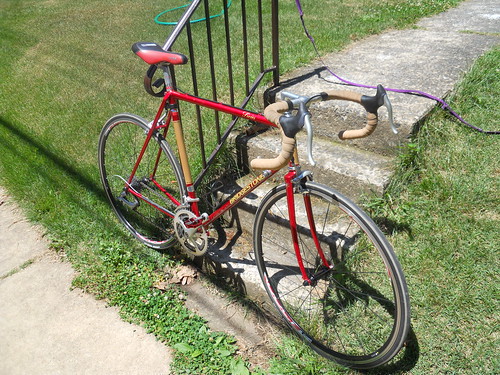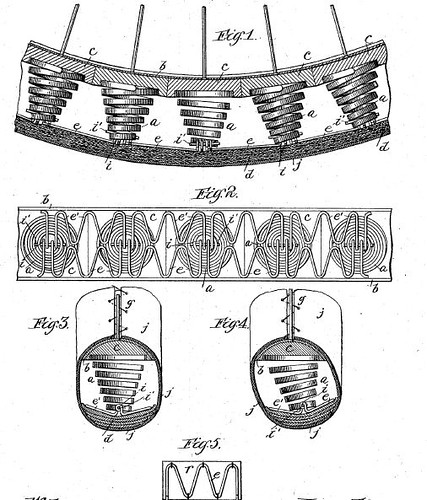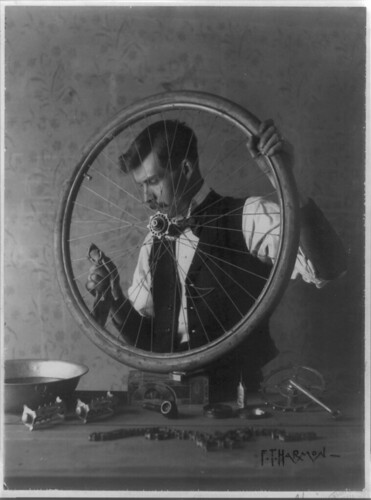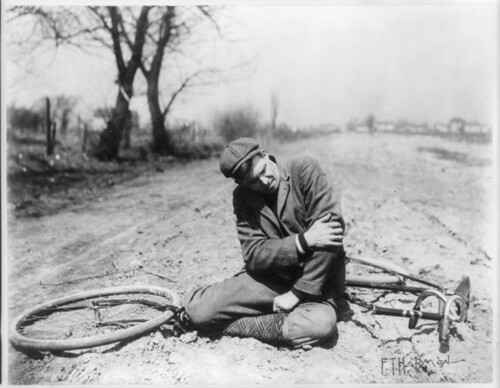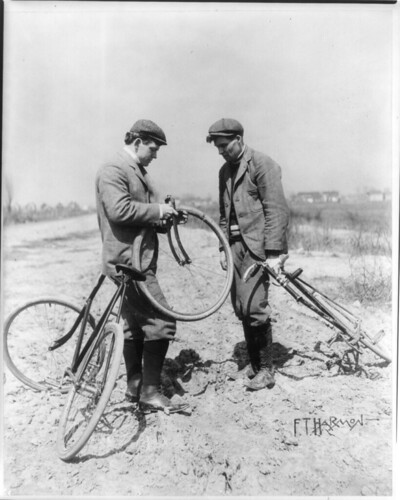Even though I'm a librarian, I am often surprised by how difficult it is to find images from cycling history that have been digitized and put on the Internet - particularly when you are pretty sure they are out there!
Looking at David Herlihy's book,
Bicycle: the History, one can find many interesting photos from cycling history - if one searches for really interesting ones in the book online and finds them, perhaps nearby will be other interesting cycling history photos - well, it's a theory. Which brings us to "Queen of the Wheel," a photo taking up all of page 413 of Herlihy's book with a caption that says, "'Queen of the Wheel,' copyrighted in 1897 by the Rose Studio of Princeton, New Jersey."
Aha - "copyrighted" - so I thought to myself, perhaps he got this from the Library of Congress, since photos deposited for copyright that are now in the public domain are sometimes digitized and put into PPOC, the
Prints & Photographs Online Catalog.
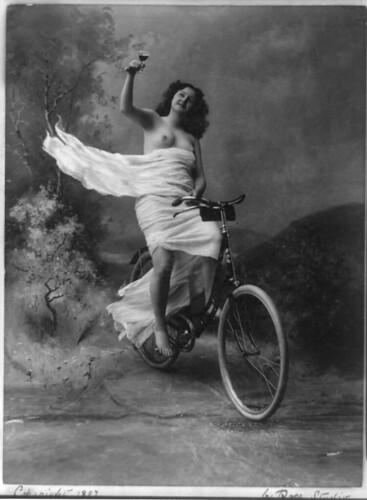 Queen of the Wheel from the Library of Congress
Title:
Queen of the Wheel from the Library of Congress
Title: Queen of the wheel
Creator(s): Rose Studio, photographer
Date Created/Published: c1897.
Medium: 1 photographic print.
Summary: Photograph shows studio portrait of a partially nude young woman, dressed in white flowing material, sitting on a bicycle, holding a glass of wine.
Library of Congress
Full record:www.loc.gov/pictures/item/2011661551/
So, as it turns out, this was correct - sort of. The Library of Congress
has digitized "Queen of the Wheel" but when I looked in the "Illustration Credits" in Herlihy's book, this item is credited not to the Library of Congress but to
"The Granger Collection, New York." So, what is that? Their slogan is, "The people, places, things, and events of the past . . . in pictures!" (R) but "Registration at this site is open to professional buyers of pictures only, not the general public." and "At this time we are unable to furnish any illustrations for personal or school use." So for most of us - this is not for us.
What likely happened here is that Granger (or someone) had the item duplicated at the Library of Congress in film and then digitized that reproduction. (I can't be sure that the Granger copy is from the LC item, but it seems most likely - as with all such images-for-sale outfits they aren't going to tell you such things.) In fact, the Library of Congress image is not from the original either, but digitized (as it says in the record) from "b&w film copy neg." One also notes that the record does not include the dimensions of the original item, a cue that the original wasn't even looked at in order to create the digital version. (So, to be clear - LC has the original, but digitized a surrogate to save wear-and-tear on the original.) To sum up - Granger (or someone) at some point in the past bought a film copy for their own use, the Library kept a copy of the negative for itself, and only relatively recently digitized that negative and made it publicly available.
What is amazing to me is that one can go to Granger and purchase digital copies of many such photographs and other visual materials that are in the public domain or you can go to places like PPOC and find high resolution copies that are free. (But remember, as PPOC says in every record, "Rights assessment is your responsibility.") Granger's view is they have a copyrighted interest in these reproductions that they can defend (
their image of the image) while the government view is that the government agency (the Library of Congress) does not have any copyright in the reproduction - all rights are associated with the underlying source material (in this case, in the public domain) and not in the government funded reproduction. (Note that I am speaking for LC officially . . . )
For example, Granger will sell you a high resolution copy of the cowboy with a bike that I
blogged about recently. Or you can purchase copies of Lewis Hine images of bicycle messengers from the early 20th century, such as the one below, that are freely available in PPOC. (
Here are 158 photos of messengers by Lewis Hine, mostly with bicycles - a very compelling, if sad in some cases, set of photographs.) Granger's version of the Shreveport messenger, by the way, is from the color version below that they then converted to grayscale. PPOC has both the color version from a print and a grayscale version from the glass plate negative. The two are cropped somewhat different.
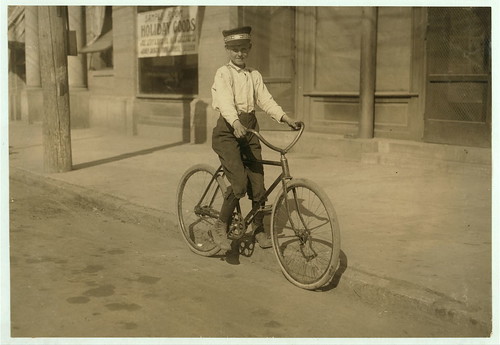 A Lewis Hine photograph in the public domain at the Library of Congress
A Lewis Hine photograph in the public domain at the Library of Congress
Title: Fourteen year old messenger #2 Western Union, Shreveport. Says he goes to the Red Light district all the time. See Hine report on Messengers. Location: Shreveport, Louisiana.
Creator(s): Hine, Lewis Wickes, 1874-1940, photographer
Date Created/Published: 1913 November.
Medium: 1 photographic print.
1 negative : glass ; 5 x 7 in.
Library of Congress
www.loc.gov/pictures/item/ncl2004002194/PP/
A final mystery - Granger's title for the photograph "Queen of the Wheel" is "One for the Road" and they give the publication date as 1900, both clearly wrong. So even though Herlihy got the image from Granger, he then corrected their citation information. Strange.
My search for Queen of the Wheel was kind of a dead end - the only digitized photograph from this "Rose Studio" in PPOC is this one. And I still don't know if it was created as some sort of 1890s erotica or if it was to serve as the inspiration for one of the many stylish bicycle company posters of the time, such as this one below (with a man, for a change).
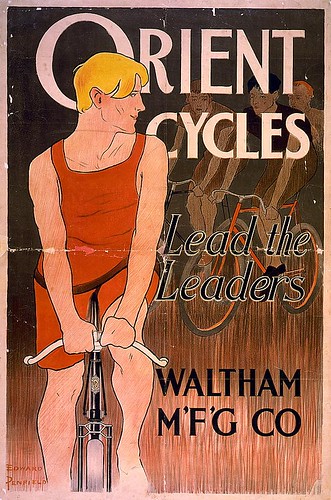 Orient cycles lead the leaders
Orient cycles lead the leaders

